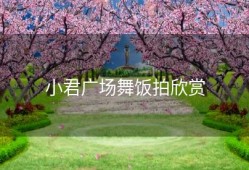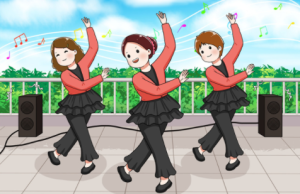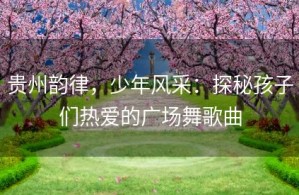The Phenomenon of Square Dancing in China: A Vibrant Display of Community and Culture
- 广场舞百科
- 2024-04-06 16:46:26
- 56
Square dancing has become an unprecedented phenomenon in China, particularly among the middle-aged and elderly population. It is a vibrant and colorful display of community spirit, cultural heritage, and physical well-being. In almost every city and town across the country, one can witness groups of people gathered in public squares, parks, or even along the sidewalks, moving rhythmically to the beat of catchy music.

The popularity of square dancing can be attributed to several factors. Firstly, it is a low-cost and accessible form of exercise. With the rapid development of urbanization and modernization, many Chinese people, especially the older generation, have been seeking opportunities to stay active and maintain their physical health. Square dancing requires no special equipment or skills, making it an ideal choice for people of all ages and fitness levels.
Secondly, square dancing fosters a strong sense of community. In a society that is often characterized by fast-paced living and increasing social isolation, square dancing provides a platform for people to come together, socialize, and build friendships. It creates a supportive and inclusive environment where individuals can share their passion for dance and their love for Chinese culture.
The dances themselves are a fascinating blend of traditional and modern elements. Many routines are inspired by traditional Chinese folk dances, incorporating graceful movements and elegant gestures that reflect the country's rich cultural heritage. However, there is also a contemporary aspect to square dancing, with choreographers continuously innovating and incorporating popular music and dance styles from both China and abroad.
One distinctive feature of square dancing is its collective nature. Unlike traditional partner dances or individual performances, square dancing emphasizes group coordination and unity. Dancers move in sync, following the lead of a "team captain" or instructor, creating a mesmerizing visual spectacle. This emphasis on teamwork and collective effort resonates with the Chinese value of harmony and cooperation.
Furthermore, square dancing has become a platform for self-expression and creativity. Many dancers take pride in their attire, wearing colorful and elaborate costumes that often reflect their personal style or regional identity. The use of props, such as fans, ribbons, or even everyday objects like plastic bags and water bottles, adds an extra layer of visual appeal and individuality to the performances.
Despite its popularity, square dancing has not been without controversy. Some residents have complained about the noise and disruption caused by the dances, particularly in densely populated urban areas. Efforts have been made to address these concerns, such as implementing noise regulations and designating specific areas for dancing. Nonetheless, the passion and dedication of the dancers have not waned, and square dancing continues to thrive.
The phenomenon of square dancing has also caught the attention of the global community. It has been featured in various media outlets, documentaries, and even international events, showcasing the vibrant and diverse aspects of Chinese culture. Square dancing has become an ambassador of sorts, promoting cultural exchange and understanding between China and the rest of the world.
In conclusion, the popularity of square dancing in China is a testament to the power of community, culture, and physical well-being. It brings people together, preserves traditional heritage, and encourages creativity and self-expression. As this phenomenon continues to evolve and grow, it remains a shining example of the resilience and vitality of the Chinese people.
免责声明:本网站上的所有文章内容均来自互联网。本网站仅在法律允许的范围内使用、分享和传播这些内容,不违反任何版权或知识产权法。如发现本站有涉嫌抄袭侵权/违法违规的内容,请发送邮件25538@qq.com举报,一经查实,本站将立刻删除。
本文链接:https://zhuangrou.com/gcw/7522.html



















